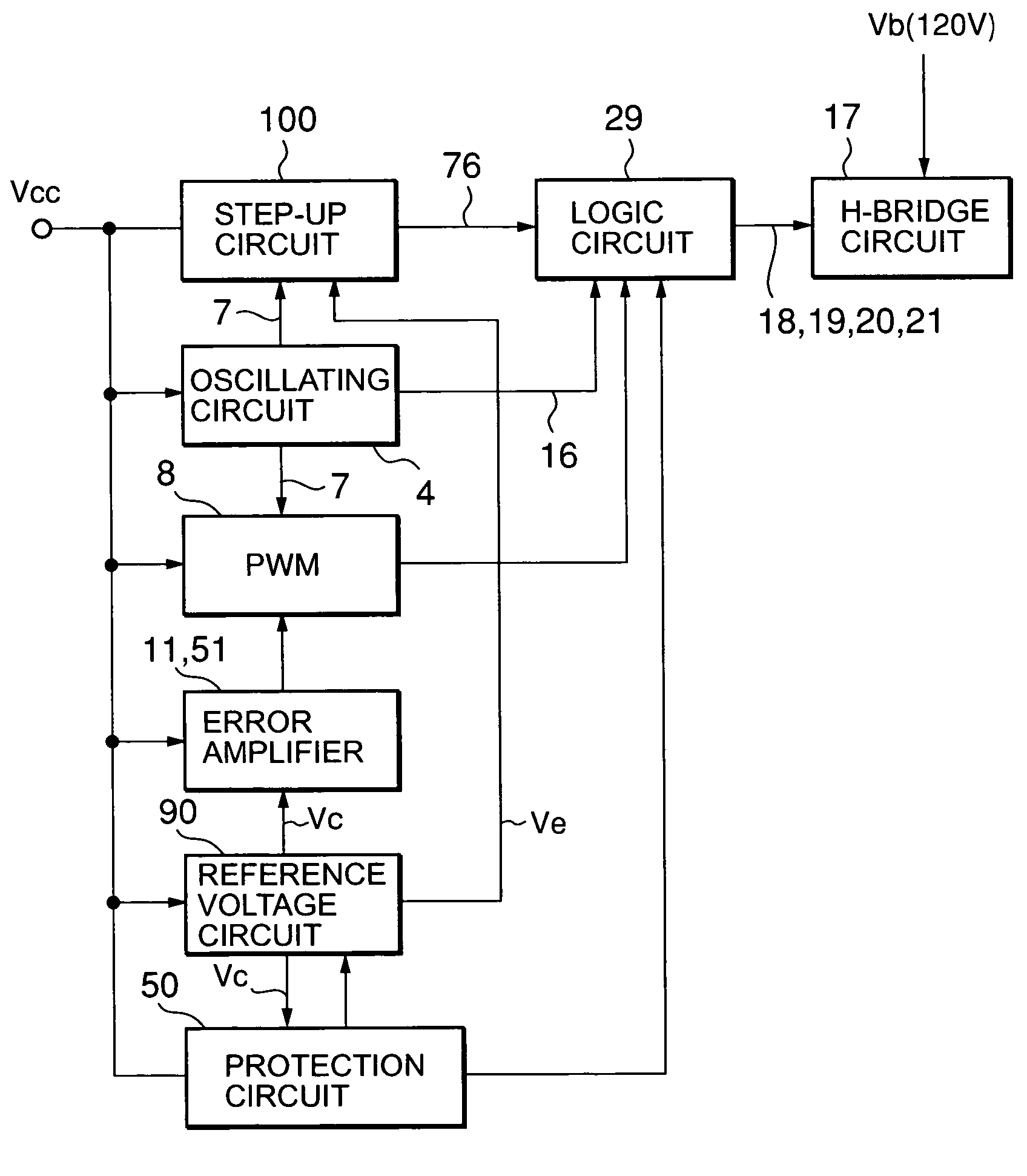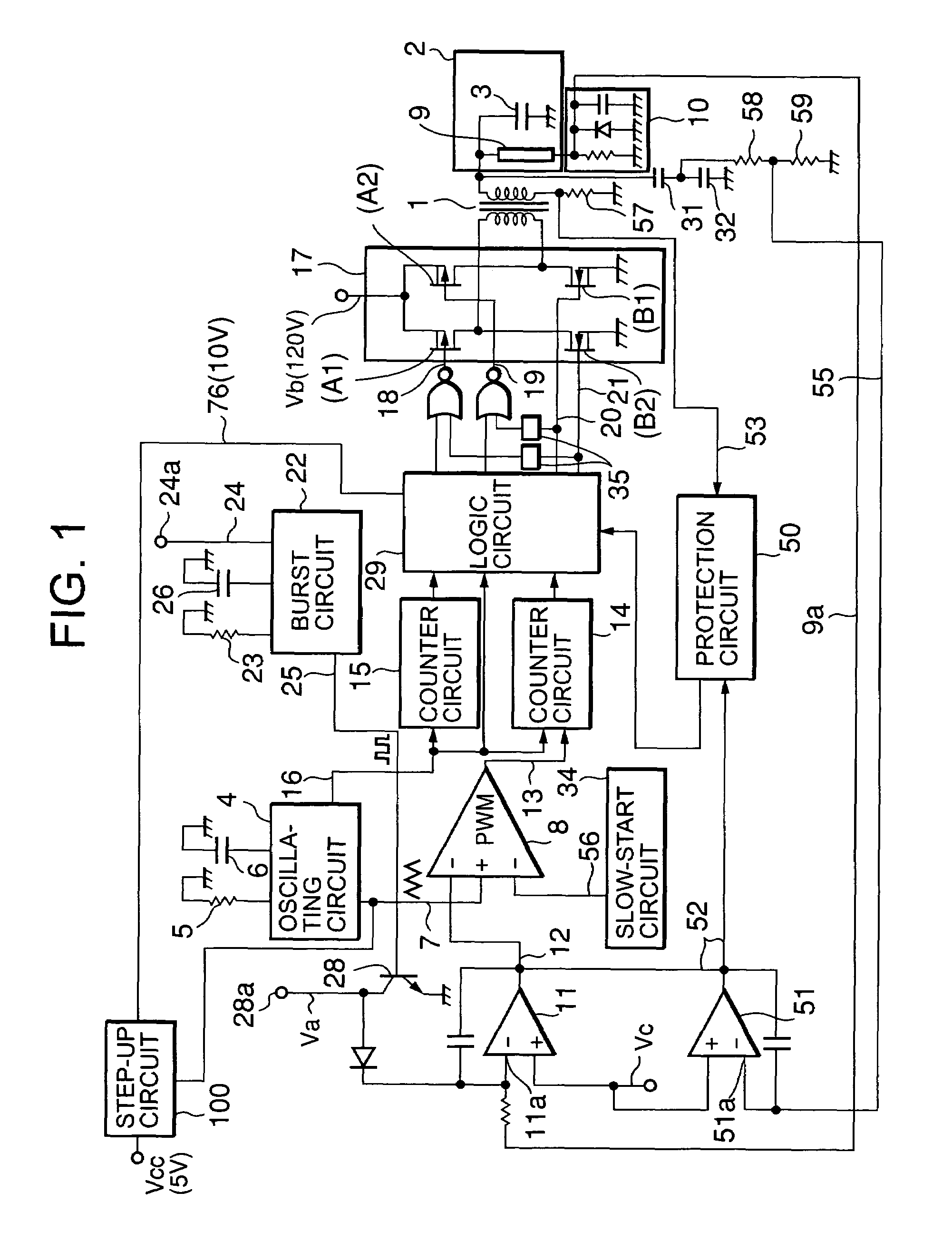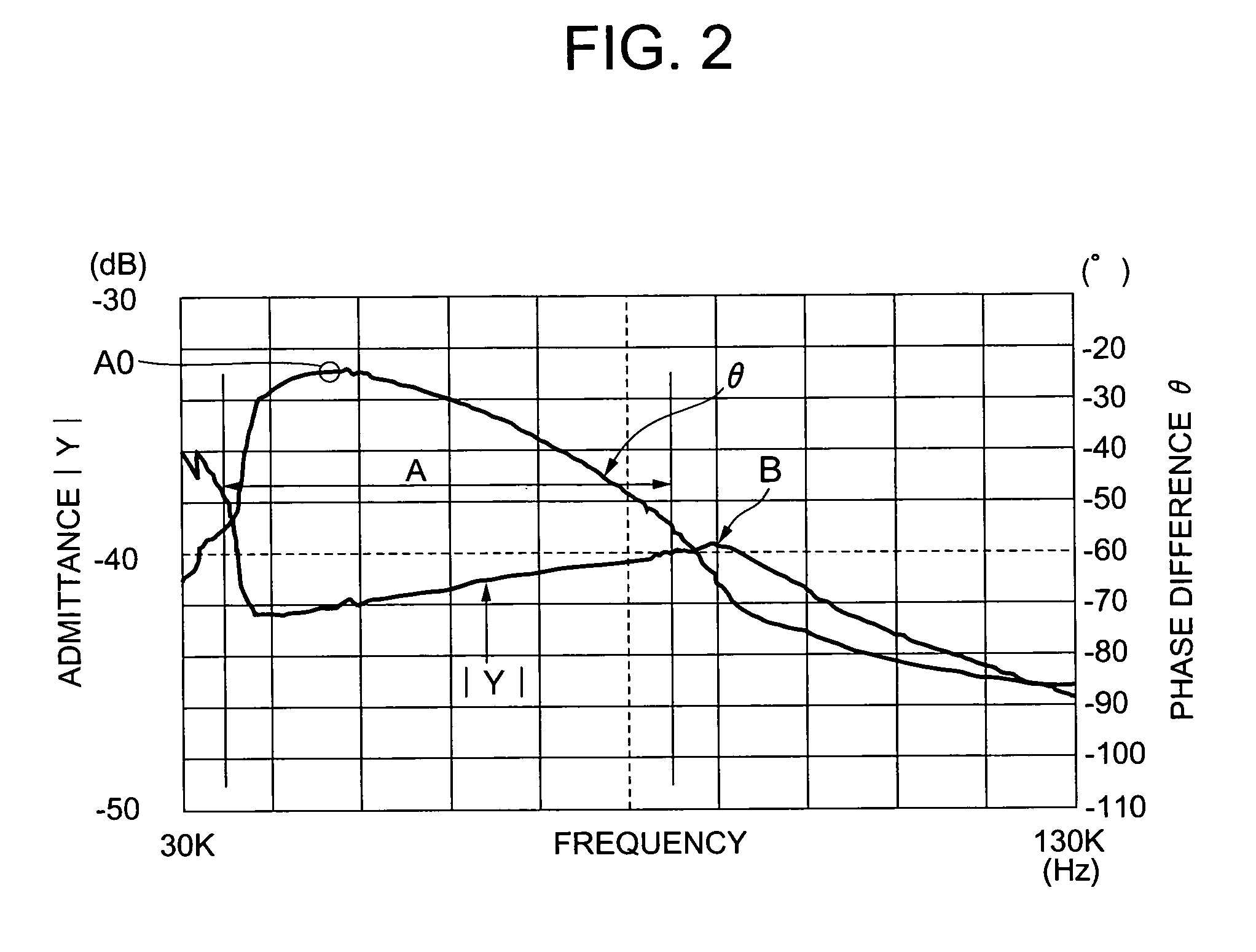Inverter circuit for lighting discharge lamps with reduced power consumption
a technology of inverter circuit and discharge lamp, which is applied in the direction of climate sustainability, efficient power electronics conversion, and electric lighting sources, etc., can solve the problems of increasing the number of components, complicating the circuit structure, and failing to achieve favorable power efficiency, so as to facilitate the design of transformers.
- Summary
- Abstract
- Description
- Claims
- Application Information
AI Technical Summary
Benefits of technology
Problems solved by technology
Method used
Image
Examples
Embodiment Construction
[0025]A preferred embodiment of the present invention will hereinafter be described with reference to the accompanying drawings.
[0026]A block diagram of an inverter circuit for discharge lamps according to an embodiment of the present invention is shown in FIG. 1. For easier understanding, an explanation will be first made on a case where a predetermined voltage Va of a terminal 28a is not applied to an inverting input terminal 11a of an error amplifier 11 thus light modulation does not occur.
[0027]An output of a chopping wave 7 of an oscillating circuit 4 is inputted to a PWM circuit 8. A discharge lamp 9 for backlighting a liquid crystal display (LCD) is disposed in an LCD unit 2 provided at a secondary side of a transformer 1 (in practice, a plurality of discharge lamps and transformers are used, but only one each thereof is illustrated for the purpose of explanation), and its voltage 9a is inputted to the aforementioned inverting input terminal 11a of the error amplifier 11 by m...
PUM
 Login to View More
Login to View More Abstract
Description
Claims
Application Information
 Login to View More
Login to View More - R&D
- Intellectual Property
- Life Sciences
- Materials
- Tech Scout
- Unparalleled Data Quality
- Higher Quality Content
- 60% Fewer Hallucinations
Browse by: Latest US Patents, China's latest patents, Technical Efficacy Thesaurus, Application Domain, Technology Topic, Popular Technical Reports.
© 2025 PatSnap. All rights reserved.Legal|Privacy policy|Modern Slavery Act Transparency Statement|Sitemap|About US| Contact US: help@patsnap.com



